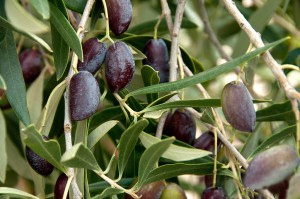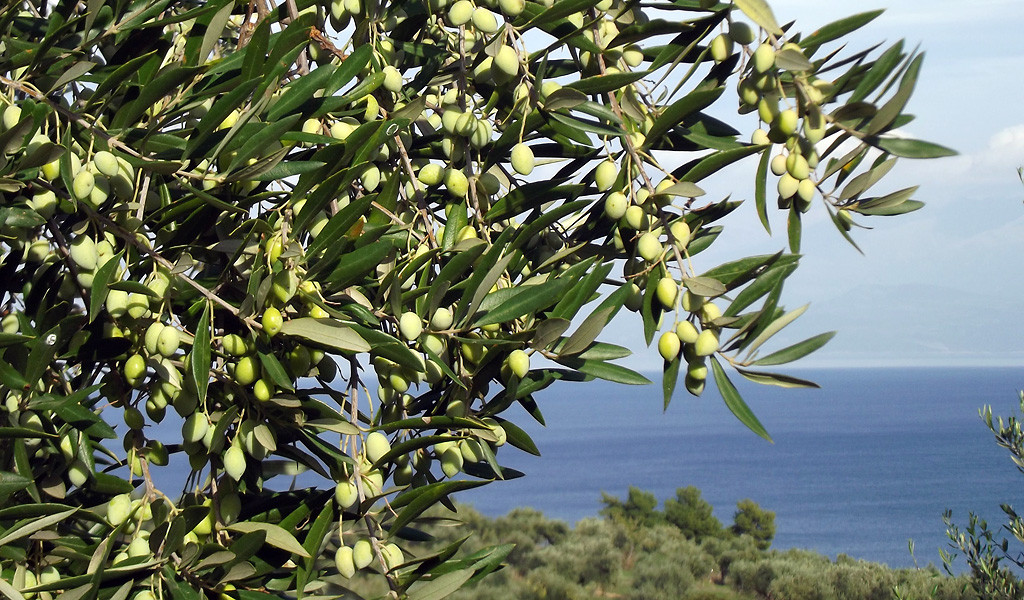It has been established that there are more than 600 varieties of olives. They vary depending on the characteristics of the trees, of their leaves, the soil in which they grow, and their geographical location. Without going into the particular classification, we will talk about what kind of olives you can see and buy in Cyprus.
Olive trees in Cyprus

As evidenced by the Bible, the dove that brought Noah an olive branch from God, became a sign that God had changed his temper from justice to mercy, and the flood stopped. The olive tree was the first to have grown up after the flood, and its branch is a symbol of peace between man and God since then.
Olive trees live for a long time, and some of them can live up to 2.5 thousand years.
According to popular legend, with those who eat the fruit of the tree, its resilience and endurance is divided to them. And speaking about Cypriots, perhaps it is true. No wonder they have long been considered to be long-lived, and now the average life expectancy in Cyprus exceeds the average European and world indices.
It is known that in Cyprus the olives were grown in the XII century BC. In medieval times the olive trees were the most common crop on the island. Thus for a long time, the island was dominated by wild olive trees, and only in the early twentieth century the British who owned Cyprus at that time, created 6 nurseries, which made it possible to significantly increase the production of olive cultivars.
Now there are more than 2.5 million olive trees in Cyprus, from which about 80% are cultivars, a fact that allows Cyprus to enter the first “twenty” countries, concerning the number of olive trees. The total harvested on the island is about 10 thousand tons of olives per year.

The oldest olive tree on the island, which is located between the villages of Agia Marina and Ksiliatos on the road from Nicosia to the Troodos Mountains, celebrated its 700th birthday; it is considered to be a local “champion”. The circumference of its trunk is more than 10 m.
What kind of olives can you buy in Cyprus?
We do not stop only at the local varieties, and consider also Greek olives, offered in the Cyprus market. It should be noted that both are usually very tasty and fresh.
Konservolea (Conservolea) is typically Greek. They are olives of the varieties of round shape and green color. Typically, they are grown in the central part of Greece. Usually they are pickled in a weak brine of sea salt and balsamic vinegar. Konservolea is a great snack, and presented during the many traditional meals.
Kalamon or Kalamata (Kalamata, Kalamon) are the most famous Greek olives, which are grown in the south of the Peloponnese (the name given from the town of Kalamata). These are almond-shaped, with thin skin and a soft juicy pulp. Harvesting begins when the olives are already fully matured and acquire a black and purple color. Traditionally, they are pickled in brine with olive oil and red wine vinegar, which gives them a delicate aroma and pleasant taste.
Megaritiki (Megareitiki) – this variety of olives is cultivated in dry soils. It ripens early (November-December) and is used for the preparation of olive oil, as well as for eating. The olives of this class are called tsakistes (tsakistes). They are usually salted or pickled. The Cypriot supermarkets sell them in bulk. Olives of this variety are an excellent snack for spirits, such as zivania.
Kolovi (Kolovi) – a variety, which grows on the island of Lesbos in Greece. Kolovi is considered one of the best varieties of both yield and as a raw material for the production of olive oil. It ripens quite late (February-March), but sometimes it begins to be harvested in November and December.
Kotreiki (Kothreiki). Trees of such varieties can withstand drought, strong winds and cold and can survive in the mountains at an altitude of 800 meters above sea level. A significant part of the crop is used to produce dark olives of large or medium size, have a pronounced flavor and a pleasant aroma.
Trumbolia (Thrubolea). The peculiarity of this sort is that they are due to bacteria exposure and in the process of maturation they are fermented, therefore lose the bitterness even while on the tree. After ripening the olives are discharged to the ground where they are collected, washed and stored in brine.
The main places which sell olives
In Cyprus, the olives are sold everywhere: in small shops, large supermarkets, markets, etc. Of course, the most delicious are the olives, which are sold in bulk in the villages or in the market. But if you do not plan to visit the city markets or take a trip to the countryside, olives of quality and good price can be purchased in supermarkets.
For example, in Limassol, olives of a very good quality can be purchased at Carrefour, Alfa Mega, Papas and Debenhams. The cost of one kilogram of olives at supermarkets is from 2 to 6 euros per kilo, depending on the variety. For example, the most expensive (5.5-6 euro per kg) are the olives with anchovies. Conventional salted or pickled olives will cost you 2-3 euros per kg.
The price of olives in vacuum packages start from 3 euros, depending on the package size and type of olives.
One can argue about what sort of olives is the tastiest or most useful. I guess everyone has their own preferences in this matter.
But one thing is certain – no matter what type of olives you choose in Cyprus, you will appreciate their high taste and nutritional value, being simple or elaborate table olives, stuffed with additional ingredients, salted or pickled.
